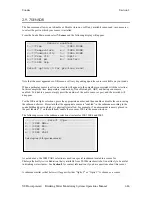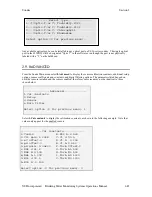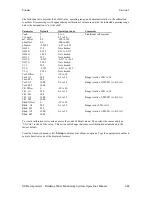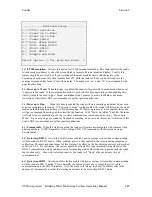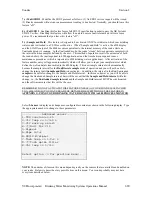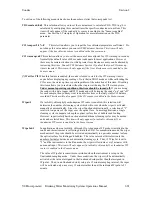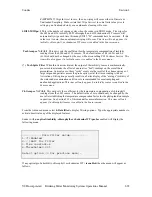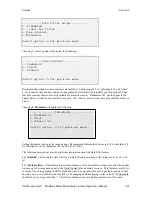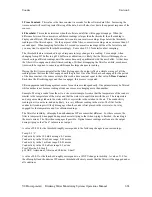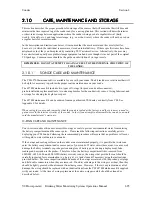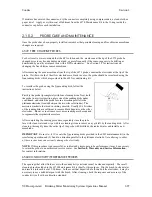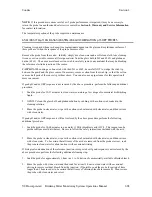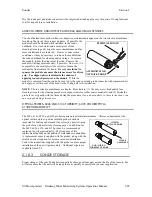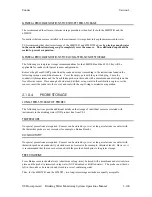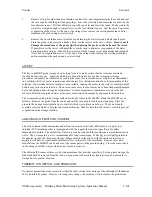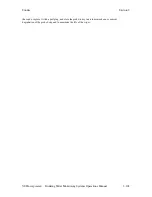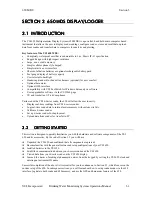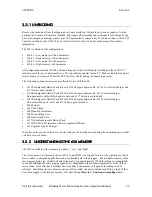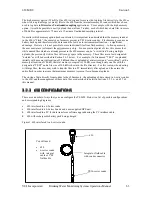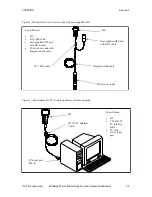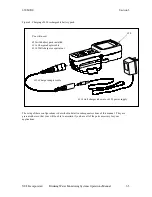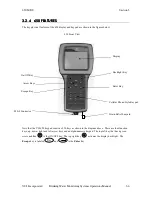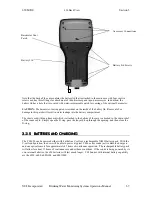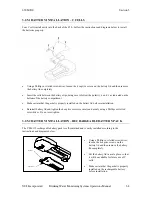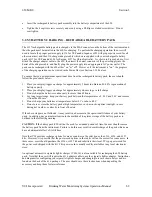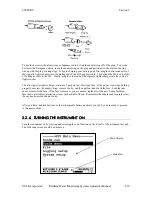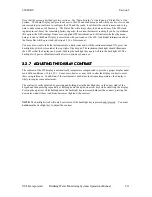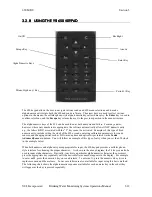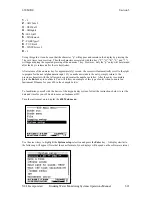
Sondes
Section
2
YSI Incorporated
Drinking Water Monitoring Systems Operations Manual
2-100
GENERAL RECOMMENDATIONS FOR SHORT TERM STORAGE
The recommended short term or interim storage procedure is identical for both the 600DW-B and the
6920DW.
No matter what sensors are installed in the instrument, it is important to keep them immersed in water.
YSI recommends that short term storage of the 600DW-B and 6920DW be done
by placing enough water
in the sonde calibration/storage cup to completely cover the sensors.
The calibration cup should be
sealed to prevent evaporation.
GENERAL RECOMMENDATIONS FOR LONG-TERM SONDE STORAGE
The following are long term storage recommendations for the 600DW-B and the 6920. They will be
applicable for sondes with typical sensor configurations.
Remove the pH or pH/ORP probe from the sonde and store it according to the instructions found in the
following section on individual sensors. Cover the empty port with the provided plug. Leave the
conductivity/temperature and the free chlorine probes in the sonde with a membrane and electrolyte on the
free chlorine sensor. Place enough of deionized, distilled, or tap water in the calibration cup to cover the
sensors, insert the sonde into the vessel, and seal with the cap/O-ring to minimize evaporation.
2.10.4 PROBE
STORAGE
LONG-TERM STORAGE OF PROBES
The following sections provide additional details on the storage of individual sensors associated with
instruments in the drinking water (DW) product line from YSI.
TEMPERATURE
No special precautions are required. Sensors can be stored dry or wet, as long as solutions in contact with
the thermistor probe are not corrosive (for example, chlorine bleach).
CONDUCTIVITY
No special precautions are required. Sensors can be stored dry or wet, as long as solutions in contact with
thermistor probe and conductivity electrodes are not corrosive (for example, chlorine bleach). However, it
is recommended that the sensor be cleaned with the provided brush prior to long term storage.
FREE CHLORINE
Free chlorine sensors should always (short-term or long-term) be stored with a membrane and electrolyte in
place and the probe tip immersed in tap water (NOT deionized or distilled water). The probe can either be
left in the sonde or be removed and stored in a vessel containing water.
Thus, for the 600DW-B and the 6920DW, two long-term storage methods are equally acceptable.

